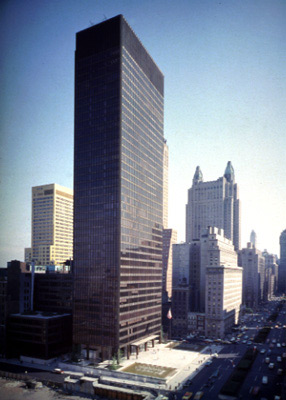Heels as modernist steeplejacking
Wearing high heels makes you taller. That in itself is hardly a merit. Why would anyone want to be tall rather than petite? Yet there exists a persistent penchant for tallness & thinness. Instead of considering this in the context of anorexic model mania I would like to propose wearing high heels as a tribute to the slender yet firm vertical erectness of modern(ist) architecture.
One of the landmarks to revere in this respect is Vladimir Tatlin’s ‘Monument to the Third International’ from 1920 - according to Vladimir Mayakovsky “the first monument without a beard.” This 1300 feet ‘dreamworld’ building was never realized due to the technical limitations of early revolutionary Russia. Tatlin constructed a 20 ft. model of his project which was on display in Moscow, but it was the print that Nikolaj Punin made of it that gained the monument a greater audience all over Europe. Punin wrote about Tatlin’s project: “Societies divided by class fought to own the earth, the line of their movement is horizontal. The spiral is the movement of liberated humanity. The spiral is the ideal expression of liberation: with its base set in the earth, it flees from the ground and becomes a symbol of the suspension of all animal, earthly and grovelling interests.” So, allow your heels to lift you into the sky, to be liberated from the urge to conquer every square inch of the earth in acts of horizontal territorialization and become instead a dynamic locomotor apparatus of revolutionary verticalism.

Ludwig Mies van der Rohe, who has his roots in the Bauhaus, is another modernist who deserves homage from high heels-wearers across the globe. He referred to his own work as ‘skin & bones architecture’, as it was skimmed to the pure basic essentials of steel, concrete & glass - and height. The Seagram building, which Mies developed together with Philip Johnson in New York in 1957, is a prime example: not only does the building reach for the clouds, it is perched on pillars as if it is standing on its toes to attain even more height. It is interesting to note how the Constructivists’ idea that verticality has a revolutionary quality was appropriated by the International Style that became almost synonym with corporate culture. It seems that in the last instance the corporate incorporates all. Is the uncanny resemblance to the skin & bones look of the high-heeled modern businesswoman merely accidental?

Here’s a photograph of a pair of my favourite heels, by Victor & Rolf.

No comments:
Post a Comment